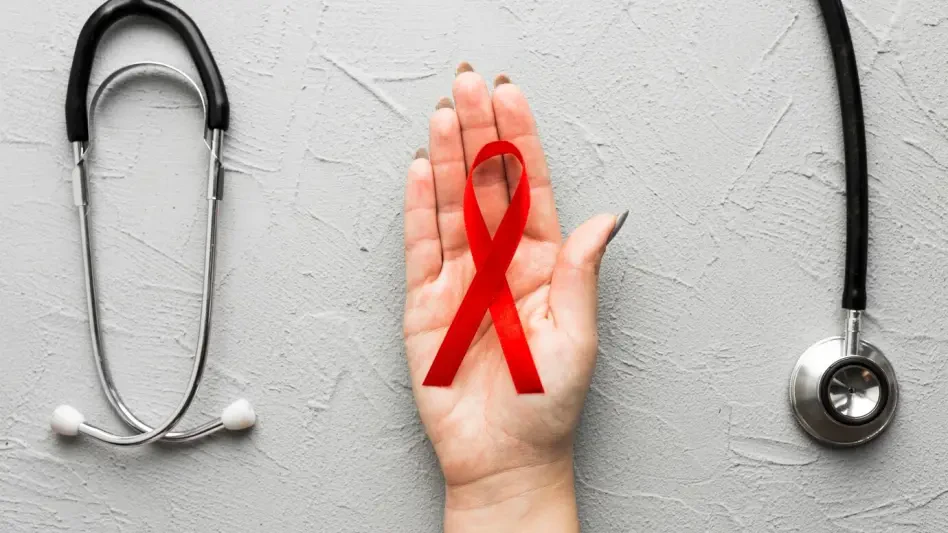Lenacapavir has recently been approved by the FDA as a twice-yearly injection, marking a significant milestone in the efforts toward global HIV prevention. This innovative treatment developed by Gilead Sciences, branded as Yetzugo, promises to revolutionize the landscape of HIV prevention efforts by offering a highly effective and convenient pre-exposure prophylaxis (PrEP) option.
Lenacapavir’s approval comes at a crucial time in the battle against HIV. While significant strides have been made in reducing transmission rates, challenges remain. Traditional HIV prevention methods, such as daily oral PrEP, have exhibited efficacy but suffer from adherence issues due to the frequency of dosing. Cultural and socioeconomic barriers, stigma, and resistance potential further complicate the landscape. Gilead Sciences has been at the forefront of developing HIV technologies, with Lenacapavir representing a cutting-edge innovation that not only addresses these challenges but also propels HIV prevention strategies to new heights.
The Science Behind Lenacapavir
Lenacapavir’s uniqueness lies in its innovative mechanism of action as a Selective HIV-1 Capsid Inhibitor. This class of drugs targets the HIV virus at multiple stages in its life cycle, offering a double-layered defense. By binding to the virus, Lenacapavir interferes with the virus’s processes, including inhibiting viral DNA’s entry into T-cells and preventing the critical assembly and replication stages of HIV virions. This multifaceted approach offers a highly effective prevention measure that strengthens its efficacy against the virus’s historically challenging mutation and variability factors.
Clinical trials have underscored Lenacapavir’s potential to significantly advance HIV prevention. Demonstrating an efficacy rate of 96%, the twice-a-year dosing schedule increases adherence levels and minimizes side effects. These trials also highlight the broad demographic diversity among participants, offering comprehensive insight into its effectiveness across various populations. With studies encompassing diverse groups, including cisgender women, men who have sex with men, and gender-diverse individuals, Lenacapavir has proven itself as a robust and universal chance for HIV prevention.
Overcoming Challenges in HIV Prevention
Historically, the development of adept HIV prevention treatments has been fraught with challenges, primarily due to the virus’s adaptability and resistance against existing solutions. Lenacapavir’s broad-spectrum attack on the virus seeks to overcome these previous hurdles by offering a resilient and effective approach to HIV prevention. However, concerns about resistance, cost, and accessibility must be addressed to ensure the drug’s successful integration into existing prevention strategies. Overcoming these hurdles is vital to ensuring that Lenacapavir fulfills its potential as a game changer in HIV prevention.
Regarding cost and access, Gilead is working with international generic manufacturers to provide affordable options in lower-income regions, underscoring the company’s commitment to widespread accessibility. In more developed markets like the United States, collaborations with specialty pharmacies seek to ensure widespread access for all eligible individuals, while patient assistance programs aim to support those without insurance coverage.
Regulatory and Distribution Considerations
Lenacapavir’s FDA approval represents a significant regulatory achievement, signifying its safety and efficacy for broad utilization. Beyond the United States, regulatory bodies in other countries have also granted approval, expanding Lenacapavir’s reach. These developments highlight the regulatory landscape’s supportive role in adopting innovative HIV prevention strategies.
Significant challenges remain in distributing the drug, especially in regions with established HIV prevention programs. Existing infrastructures, such as PEPFAR and the Global Fund, provide a robust framework to integrate Lenacapavir into diverse healthcare settings. However, political challenges have arisen, most notably in regions considering cuts to global health budgets. Navigating these hurdles will be essential to maximally position the drug as an accessible option for those in need.
Future Prospects and Implications for HIV Prevention
Lenacapavir’s introduction could redefine long-term strategies in HIV prevention, offering what experts describe as close to a ‘vaccine-like’ solution. Its twice-yearly administration makes it a promising candidate for enhancing engagement and adherence. Current research is exploring the potential for prolonging dosing intervals even further, which could position Lenacapavir as a pioneer in PrEP treatment regimes. This progressive transformation garners optimism for the global decline in HIV transmission rates.
The implications for HIV prevention do not end with Lenacapavir; ongoing research is driving potential innovations in delivery methods, longevity, and integration into broader prevention activities. This shift in focus both on immediate solutions and future potential underscores the evolving nature of HIV interventions and the open prospects for continued advancement.
Conclusion and Outlook
Lenacapavir established itself as a transformative step in the global fight against HIV. Its innovative approach, combining twice-a-year dosing, robust efficacy, and a minimal side-effect profile, offers a fresh perspective on the management and prevention of HIV transmission. While political and logistical hurdles remain in ensuring widespread access, the public health implications present a pathway to significantly reducing incidence levels. As the landscape of HIV prevention continues to evolve, Lenacapavir stands as a symbol of innovation, promising significant advancements in protecting at-risk populations and envisioning a future with reduced HIV transmission.









